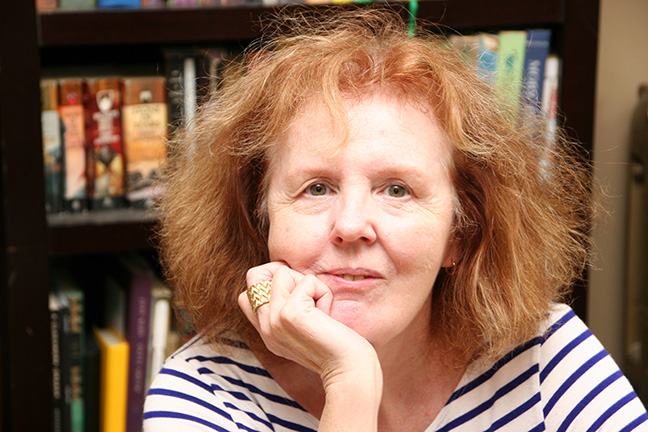 Interviewed by Bob Holman
Interviewed by Bob Holman
The New Jersey surrealist, trance poet, and rock ’n’ roller Janet Hamill is a true American original, an amalgam of disparate parts. She is the author of several books of poetry and short fiction, including Troublante (Oliphant Press, 1975), The Temple (Telephone Books, 1980), Nostalgia of the Infinite (Ocean View Books, 1992), and Tales from the Eternal Cafe (Three Rooms Press, 2014). With the band Moving Star she has recorded two albums combining spoken word and music: Flying Nowhere (2000), which was produced by Lenny Kaye, and Genie of the Alphabet (2005), which features cameos by David Amran, Patti Smith, and others.
Janet and I have been friends for decades; I executive produced her albums, and in 2008 my small press Bowery Books published her collection Body of Water. The interview that follows is a lightly edited version of a conversation recorded for my “Let’s Talk” podcast series on the occasion of her latest book, Knock (Spuyten Duyvil, 2016).
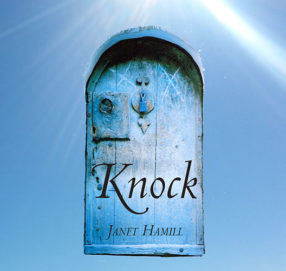 BOB HOLMAN: Sitting in the land of poetry, let’s talk with Janet Hamill. Bob Holman here, high atop Bowery Poetry Club and across the street from . . .
BOB HOLMAN: Sitting in the land of poetry, let’s talk with Janet Hamill. Bob Holman here, high atop Bowery Poetry Club and across the street from . . .
JANET HAMILL: Our old hangout, CBGB’s!
BH: Do you remember the first time that Patti Smith played there?
JH: I don’t know if I was there the first time she played, but I remember when I went there for the first time. Patti was playing. It was before Horses. They were trying out new material. It was before CBGB’s had caught on. I used to go, as I used to go to all Patti’s shows at all the different little venues she played in, whenever we were both in town at the same time. She always put me on the guest list. I was there to support her. I was at the recording studio when they did Horses.
BH: What was that like?
JH: It was great! They were at Electric Ladyland on 8th Street. They would begin at night. I wasn’t working at the time, so I was keeping the same crazy hours. I would show up about 9 o’clock, and they’d either be in the middle of recording something or they’d just stopped something. John Cale was the producer and I remember loving his sense of humor. He and Patti sparred all the time. Robert [Mapplethorpe] used to come all the time, too. We were both there to support Patti on her first album. My best memory is when Robert and I were there together. He had liquid hash, which I’d never had before. Robert was so mischievous; he loved to tease me, gently—teasing with love. He gave me the liquid hash when we were away from Patti and the band. Electric Ladyland’s quite cavernous once you you’re inside. We were wandering around these psychedelically-painted murals, chatting and laughing. He waited until I was really high to tell me that one of our best friends from the old Pratt days had committed suicide. That was Robert! But I loved him so much; he was just mischievous. It was okay.
BH: What would Patti and Cale be sparring about?
JH: Oh, you name it. Any little detail. I thought the musicians were great, but Cale was a classically trained musician. He said all the band’s instruments were out of tune. He insisted that all the musicians go out to and buy new instruments. That got everybody all upset. And Patti had her own ideas—she wanted me to sing background vocals on the album. Cale said “No, I don’t want that.” It was all nit-picking, really.
BH: Let’s rewind. How did you get involved in poetry? Where were the poems that found you?
JH: Well, it really goes back to high school, I can even remember the exact moment. I was in my living room, in suburban northern New Jersey, in my junior year of high school . . .
BH: Which high school?
JH: New Milford High, in New Milford, NJ. My English teacher was so glamorous; I just adored her, I wanted to be her. She really did look quite a bit like Greta Garbo. She had this long wave of hair that she was constantly brushing back.
BH: Do you remember her name?
JH: Yes, Gloryia Okulski. She had been a floor model on 5th Avenue in department stores, you know Saks and Lord and Taylor, before she married and settled down and decided to teach English. But she was just so striking and so glamorous, and a great teacher. She was the head of the opera club, so I joined even though I couldn’t care less about opera.
BH: What kind of music did you like?
JH: I liked rock and roll, and I was just then starting to get into folk music. Also I actually did love Frank Sinatra and Tony Bennett at the time and classical music, but I hadn’t crossed over into opera. Anyway, junior year we had British poetry and the weekend assignment was to read Thomas Gray’s “Elegy Written in a Country Churchyard,” which was early or pre-Romantic poetry. And I remember sitting there; it was an early Sunday afternoon; it was early spring, maybe March, kind of a gray day and I was just transfixed, as if the world had faded away. It was just me and the poem.
BH: In your living room in New Milford.
JH: At that point I knew poetry was somehow going to be a big part of my life.
BH: Were there any books in the living room?
JH: No, no, I grew up in cultural depravity. The only books we really had were Golden books. And the only other literature that came into the house was Life magazine. I remember when it came, it was like “Who’s gonna get their hands on it first?”
BH: And you were one of five kids?
JH: One of five. My dad was very artistic, very smart. He could play instruments, he could write well. He could sing; he sang in the choir at the Catholic Church. And he could draw very well. So, whatever talents I have, that’s where it comes from. When I got to high school . . .
BH: And you’re painting still, right?
JH: Yes, still painting . . . we used to get the Sunday Daily News for the comics. I remember insisting one year in high school, saying “Daddy, please can we get the New York Times?” So I introduced the family to the New York Times. I was the only one who read it though, because it didn’t have comics. To this day it’s the same. I have one nephew who’s kind of taking after me, but it’s still a family that loves pop culture, yeah.
BH: So Mrs. Okulski, who had you read “Elegy Written in a Country Churchyard” . . .
JH: Yeah, from there it was Blake, Coleridge, Wordsworth, Byron, Keats, and Shelley. I was just spinning!
BH: Did you start to write at that point?
JH: No, I didn’t start to write until college. I went to college actually to become like Mrs. Okulski, to become a high school English teacher, but somebody knew I was so in love with poetry and involved in it in my own private way, and they pushed me onto The Avant, the campus literary magazine.
BH: What college was this?
JH: Glassboro State College in South Jersey. The family had no money; I was the first in the entire history of the family to go to college. My parents didn’t want me to go. That was a big deal. It was a guidance counselor who stepped in and told my parents that their daughter really should go to college. They wanted me to be a secretary in the city for a little while and meet a nice man in the office and settle down and have kids, just like my mother had done. But I knew that wasn’t for me.
BH: Did your mother have any leanings toward the arts?
JH: Her whole side of the family is really colorful! My grandmother was in vaudeville during World War I and just afterwards. I still have a photo of her in a tutu. She had stockings on; and she always made a point of telling you that she had stockings on, that those weren’t her bare legs in the picture. She travelled up and down mainly from New York to Boston. The family was based in Hoboken, Weehawken in Hudson County, New Jersey. So she was on the stage, yeah!
BH: Did you know your grandmother?
JH: Yes! Whenever the family would get together they’d all have a couple of beers in the backyard or down in the bar basement and they’d sing all these old songs from the ’20s and ’30s. She had a voice like Ethel Merman and she belted it out!
BH: Haha!
JH: But my mom, she was a great person, totally down to earth and didn’t have any desire for show business or anything like that. She was an only child; she really just did want to have a whole lot of kids.
BH: So there you are at Glassboro State College . . . did you commute from home?
JH: No, I lived in the dorms but most of the students were commuting students. But working on The Avant really changed my life. That’s when I started writing, that’s when I met some wonderful people, one of them being Patti, but also some other people—Bill Hart, Paul Murkowski, Bob Shaffe, all really talented writers. I thought they were really all going to be great writers and poets, but didn’t think it was going to be me.
Those early literary magazines that I still have copies of—I wrote the poems and Patti did the illustrations. She was an art major. She wasn’t writing back then.
BH: So how did you first meet?
JH: In the office of the literary magazine. I’d seen her on campus and she came up to me, but I was very shy and didn’t take to people very easily. We were part of the Beatnik coterie on campus, so we were also involved in campus productions of theater, and I was madly in love with acting and even entertained thoughts of being an actress.
BH: So you were in plays? What plays were you in?
JH: The Stronger by Strindberg, a play for two women. One woman did all the talking and I did all the reacting—I didn’t speak at all. Another play was Aria da Capo by Edna St. Vincent Millay. Bill Hart directed that one. He was one of the really talented poets on The Avant. It was one of those moments where I went into a trance and blacked out. I have no memory of that performance whatsoever.
BH: Well, trance is a word I’ve used with your work. When I first heard you read, your poems were so different from everybody else’s in Downtown Manhattan in the ’70s and ’80s. Because you memorized your poems and when you read them you seemed to go into a trance yourself, which induced a trancelike state in your listeners—you brought us along with you! When you were writing poems in college, were they the same kind of poems?
JH: No, they weren’t nearly as developed. I was writing very short-lined poems.
BH: Who were your models then?
JH: Dylan Thomas was one of my great loves and my private library of his books takes up almost a shelf. Yeats, T.S. Eliot, they were my big faves. Other than the Romantics in high school, they were my faves.
BH: When did Baudelaire and Rimbaud, those guys, come in? I always thought they were the poets that you and Patti bonded over.
JH: Well, later. We really bonded one day backstage, at the theater in Bunce Hall. That was another hangout place for the people who were involved in the Beatnik coterie, people on the literary magazine.
BH: Did Patti work on the theater?
JH: She acted! She was in a production of Phaedra, and she was in The Boyfriend, doing some kind of crazy tap dancing thing. It was dark and it was just the two of us on a floppy old used sofa back there and she confided in me this very personal thing that she was going through at the time—it was a relationship thing. No one had ever confided something like that in me. That really solidified us.
BH: So after college then . . .
JH: After college, Patti went first to New York City, while I stayed on to graduate. She had friends from South Jersey who were at Pratt, so she gravitated there. We didn’t know anybody in the city at all. Then when I graduated a couple of months later, she said “Come on, why don’t you come move to the city?”
By then, the summer of ’67, she had met Robert and was already living with him, and I got my own place on Clinton Avenue, a studio apartment, and I saw them just about every single day. I was working at Scribner’s [Bookstore] at the time, and then Patti got a job working there, too.
BH: What were you doing there?
JH: I was a book clerk—I was in heaven! I used to go there from Jersey just to be there, you know? The publishing house used to be on top, and still was back then.
BH: So where was Scribner’s?
JH: Scribner’s was on 48th and 5th. It’s no longer there, but it was beautifulit had a mezzanine, and I worked upstairs in the poetry section, and in philosophy, too. It looked out over Fifth Avenue. It was perfect.
Back then the ideal was if you could make in a week what your rent was, you were doing just fine financially. And that was the case: I made $75 a week, my rent was $75 a month, and the rest was spent on books!
BH: Those were the days when Frank O’Hara was just down the street from you, leaving the Museum of Modern Art to type up his poems on the Olivetti typewriters set up as displays in front of the Olivetti building. Lots of poetry in the air.
JH: I remember one time Patti and I walked from Second Avenue at the United Nations all the way down to St. Mark’s and the Lower East Side, to 8th St, in honor of Frank O’Hara and his poem “Second Avenue.”
BH: It’s funny when you talk about that bookstore, your voice moved into that range that I remember from those poems that were so special. Back at the Nuyorican I was called upon to divide the poetry world into my own taxonomy, and you and Wanda Coleman were the trance poets because both of you had poems so instilled in the physicality of your bodies that when they came out it just felt like you were there and we were moved into this trance place. Of course your aesthetics were different to hers, but that place you took the audience to was unlike anything else. Do you have one of those poems that you could give?
JH: Yes! This one is called “La Mort Extraordinaire.” Poe, being one of my favorite American poets, this is about his death.
La Mort Extraordinaire
Poe exploded into a thousand pieces
the abominable atrocities of his mind
scattered and swallowed
by vengeful birds
the angel hooked
the falcon hooded
his bones rattling the quiet
of small coast towns
in a whirlpool
the rocks of ages split
to dig down
and reverse the velocity
chemicals spin in a centrifuge
call stop
and the lid
is hurled into space
bone china
luminescence
smooth white skin of an innocent
embalmed and rest in peace
the crows fly out of his skull
JH: I’m a little older now. I hope it has the same intensity.
BH: Well, yes it does. That’s an amazing poem. You hear the influences, you hear Yeats.
JH: By then I was starting to fall in love with the Symbolists. But that all happened in New York. I remember first discovering Apollinaire—it goes back to Glassboro, actually. One day the faculty advisor to The Avant got a professor from Temple University to come over and speak to the magazine crowd. He spoke to us about French literature, the Symbolists, and that was my introduction. When I came to the city I bought (Apollinaire’s) Alcools. From there it progressed into Baudelaire and Mallarmé and Rimbaud. And Hart Crane! He was in the city!
BH: And you wrote a poem about that?
JH: Yes, that was “The Lonesome Death of H. Crane,” with the title from Bob Dylan’s “Lonesome Death of Hattie Carroll.” Since his name is Hart, and he had such heart, I liked the irony of saying H. Crane. When I discovered him, I couldn’t believe him. I know we’re not supposed to believe in the pantheon anymore, but it just touches me that Harold Bloom, who does believe in the pantheon, considers him to be the greatest American poet. Crane’s output was not much, but to me he was an American symbolist. He knew William Carlos Williams. In New York in the ’20s there weren’t that many people involved in poetry, everyone kind of knew each other. But Williams took American poetry in one direction, and most people followed him, like the Beats. Not many people followed Hart Crane, maybe because he was too obtuse, I don’t know, but his language is like a cut gem, every word could cut you.
BH: You hear it in your performance there. I know this is asking a lot but do you have “Sacrifice”? Could you read it for us? I remember it being the centerpiece of many a reading that you gave in those days.
JH: This was totally written under the influence of Baudelaire when I was really at the height of my Baudelaire obsession. It has nothing to do with him, but I think I somehow captured his essence, and if Baudelaire had been alive at this time in the mid ’70s, I like to think this is how he would have written.
Sacrifice
There’s a fire inside the mountain where a puma rests
on the continents of silence. The unfurnished living-
rooms in space. Where now a sacrifice takes place. Be-
yond a landmass of skeletons. The ice flows creep. Long
lines of leopards in the snow. You have to go. To keep
the logs keep burning in a hailstorm. The corpse of a bat
in the night. Stills. The windowsills are dirty. And hope
trembles on the legs of a dying praying mantis. Solstice
Leave me now like this. With the sun bleeding. Passing
Spanish hearts in my hands. The soft white flesh of a tender
neck. Thrown back into submission. A face full of resignation
The eyes pleading. Close me now like this. Forever. Shut
the light. Release the seas. The endless ocean voyages
of melancholy. Ions flare in the fire. The bookshelves rise
like a tower of the arcane world. You cling. In a silk cocoon
of a yellow sheet. A wing of Baal’s angels. The ancients
press on your skull. Like a tumor. The manuscripts curl
in a flame. And I light a light. In the darkness. The cigar-
ettes drop to the floor. And they reappear. The long lines
of leopards in the snow. It’s time to go. Into a courtyard.
Into an unfurnished living room in space. To make your grace
beneath the jaws of a generous lion. Teeth capped down
to the bone. A layer of platinum. Morphine. Erotic waves
of criminal water. The painless pleasure of death
With a bite in your jugular
you break on through
releasing the final
vials of congenital poison
pints of blood
and millenniums
of endless
ocean voyages
BH: Wow! I guess you could say that there’s some Philip Lamantia in there and that Surrealism might be there too, but nobody touches that poem, Janet. What was the situation that brought the poem?
JH: It was an old boyfriend, Roberto, my Argentine love. We were forever breaking up and getting back together. At one point I just wanted him out of my life. So I’m sacrificing him in this poem.
BH: How old were you when you wrote that poem?
JH: About thirty.
BH: And you were living in Manhattan about that time?
JH: Yeah, I was living on Van Dam Street on the ground floor, facing the street. I found out later from another boyfriend that he would walk by and look into the window to see me writing that poem. I had an old electric, just banging it out. Next morning I’d read it and make corrections.
BH: So at this point, Patti was already involved with St. Mark’s, she’s already involved with Sam Shepard; she did Cowboy Mouth, so the acting she was doing at Glassboro continued. You never followed her into those worlds and scenes, but you kept your friendship with her.
JH: It’s true, and it’s quite amazing. I never wanted to be more than a poet. Patti even encouraged me to work with a band. This was when I was in the city and she said “You know enough musicians, why don’t you put a band together?” I really didn’t at that time, I just wanted to be the best poet I could possibly be, and I’d already decided I wasn’t going to be an actress. When I first came to the city, Patti and I took classes at The New School. Patti studied with Bill Berkson and I took a class on theater and acting and directing because I still had dreams of being the next Geraldine Page.
BH: And you met Federico Fellini . . .
JH: Yeah, who I’ve written about! I just think he’s one of the greatest geniuses ever. I wanted to be a filmmaker but I knew I just didn’t quite have the personality for that.
BH: And Patti was studying with Berkson, writing her poems. Were you trying to get your poems published?
JH: No, I didn’t get serious about it until after I did my travels. I was writing, but I was very shy about it. I had such high regard for the poets that I admired that I couldn’t see myself to be considered the same kind of animal. I just couldn’t call myself a poet until I was well into my thirties. That’s because people started calling me a poet and I thought, “Well I guess I am one, everybody seems to think so.” But I was that in awe of people like Hart Crane and Baudelaire.
BH: So you started to travel?
JH: Yes, that was my first great love. I wanted to see the world. I really believed all the romance of being an artistthat you had to see the world, have as many relationships as possible, so that your life was rich and you weren’t writing from an ivory tower or in a bubble. One of my favorite films still to this day is Lawrence of Arabia—it’s just all desolation and Peter O’Toole and his brilliant white robes and blue eyes and the desert. I loved the aesthetic of Arab and Moorish art, so my first destination was Morocco. Also, I wanted to get down to the Serengeti plains to see the animals in their natural habitats, which did happen, all in that journey.
BH: How long was the journey, who did you travel with?
JH: I traveled with a boyfriend who’s now quite well known as a photographer, Neil Winokur. He’s married to a well-known curator, you probably know Ann Umland.
BH: Sure.
JH: So Neil and I made that journey. We were gone about a year. We were young and you could just sleep on the ground under the stars half the times, you know. We pretty much made it on what we had saved, and then we got stranded in Nairobi. Neil at the time had been working at The Strand. Fred Bass (the owner) was quite a generous man. Neil wired him and Fred sent him money to bail us out of Africa! Then Neil went back to working at The Strand and eventually paid him back. Those things could happen then!
When I came back I got serious about writing. Then I decided to settle down in New York and get serious about this. Patti set up my first reading; it was at a loft in Chelsea. I read with Annie Powell and Ruth Kligman, who had been Jackson Pollock’s lover. She was with him in the car crash that killed him. It was my first reading and I always felt from the beginning that the poem should be memorized so that you could deliver it like a song and you would be interpreting it.
BH: Where did you get that idea?
JH: Well, it must be from Dylan Thomas. I don’t know if he memorized poems but he was such a brilliant reader. I’m a big fan of recordings to this day.
BH: I don’t think your grandmother had anything to do with that.
JH: No, I don’t think so either. She was all vaudevilleshe would have wanted me to be in musicals or something similar. So it had something to do with Dylan Thomas’s influence: I’d seen movies of him reading. I had recordings of him. I just thought by memorizing it, it would be like memorizing a song and you could interpret it like Billie Holiday. I remember preparing for my first reading: Patti’s sister Linda was living at the time on 10th Street. She had a tiny studio apartment, right down the street from St. Mark’s, and I lived on St Mark’s Place. I would go over every night for a week and work with her, memorize poems, read them out loud to her. Every night we worked, and then I read that night in a loft. I remember Rene Ricard was there because Patti was friends with him. He came up to me afterwards and said, “You’re gonna be a star!”
BH: Well, Rene knew—he was a great judge of talent, that dude. So I’m assuming that maybe the “Poe” poem and “Sacrifice” were in that reading?
JH: Not “Sacrifice” but “Poe,” yes. I know that was written by then because I wrote it right after I came back from San Francisco where I lived for a year, at the end of the Haight Ashbury days. I then came back to New York again to save money to go to Africa. I was with Neil then. That’s when I lived on St Mark’s Place, and that’s when that poem was written.
BH: So were there poems about Africa in the loft reading that you did?
JH: No, it took a while. I think the first poem about Africa was “The Big Sleep,” which is in The Temple; most of The Temple is about Africa. Things have to seep into me. I can’t write when it’s a fresh experience. It has to distill, I guess, like an alcohol.
BH: I think that’s what makes your most recent book, Knock, so incredible—the way that all of your travels seem to have been distilled, finally into a book that took decades.
JH: Yeah, it’s always been that way. If I write something raw, so to speak, then the language isn’t good enough. The emotion may be there but I don’t have enough control over the words.
BH: While we’re on that subject, what were the other trips?
JH: Oh, there was back and forth across the country and down into Mexico.
BH: Where did Troublante happen?
JH: Troublante: I took that title from Carlos Fuentes. There are lines in his novel A Change of Skin that I quote at the beginning of the book: “Something to worry about, to be troubled by . . . The troublante, the difficulty. Lord, I forget what language I’m speaking.” I was just so influenced by non-English speaking poets, and there’s something about an iguana in there.
BH: It had to do with the Mexico trip.
JH: That was in Troublante, and then the African poems started to come out in The Temple.
BH: What about Lost Ceilings? What was happening in there?
JH: Lost Ceilings, that’s my homage to New York—a book written in prose poems.
BH: I can see you’re pulling something out of the book, why don’t you read it to us?
JH: Ok, this is the title poem and this is about a certain period in my life when I was living alone on Van Dam Street. I had a certain lifestyle. I would either work in a bookstore or for years I worked in Cinemabilia, the film bookstore on 13th Street. I would work all day, surrounded by film books and memorabilia, then come home and write. I was by myself then, I could do that, come home and write. I didn’t have any other responsibilities. So this is “Lost Ceilings”—it’s about writing actually.
Mirror mirror on the floor. How the sharp, silver slivers
reflect the truest likeness of the soul. Splintered,
insignificant pieces, on the edge of this world, a little
haunted tonight
The four white walls of the hermitage surround. A polar
diorama. A landscape of ice, interrupted by a pocket of
desk lamp light
In the hand of an anchorite, a lantern. Fra Angelico’s
Annunciation. The Horse Nebula, composed of gas and
dust. The Pyramids of Giza. Picture postcards,
circumscribed by amber glow. Picture postcards, left
behind at the entrance to an uncharted network of inland
seas
Soaring wings over choppy waters. Away from this world,
the genie of the alphabet rises out of the typewriter with
a rosary of fire. Twenty-six beads of blood for twenty-
six letters. To fly in the face of finitude
Half obscured, the telephone receiver lies on its side,
under a Mexican shawl, muffling its sound. Such solitude
as afflicts the room, tilted on an angle. Unassailed on the
cusp of darkness
The bookcase, in the cold thin clouds, is a heavenly trove
of torches. Burning pages. Paths and spirals. Labyrinths
lighting the way to a desert birthplace. Far, far away from
this world
In the midst of an ocean of sand. The genie of the
alphabet rises out of the typewriter with his horn of plenty.
Serenading the lost ceiling of stars with high notes
BH: What a trip!
JH: That’s how it felt when writing was really going well. When it’s really going well, it can be sublime.
BH: It’s hallucinogenic. We get you sitting there at the typewriter, the genie of the alphabet, 26 letters to fly in the face of finitude, and 26 beads of blood . . .
JH: That’s the holiness of the alphabet, and the blood and sweat of writing, really.
BH: Again you go to Africa and you go to Mexico, sitting at that typewriter with the postcards of the past. It’s all real and yet it’s totally psychedelic, hallucinogenic.
JH: I think that’s intentional. I want to be able to take people away. I consider myself an escape artist. I’m not particularly comfortable in the real world; I never have been. I want my art to take people away from the mundane day to day and get a touch of another world, the beyond. Whatever it may be to you. I do believe there’s something beyond us, beyond this realm. I don’t know what it is. I’ve spent my life trying to think about it, and it’s still the great existential question: “What is there when you don’t believe in conventional religion?” But there is definitely something. I believe in spirit. With my words I try to put people in touch with that somehow.
BH: Hence Lost Ceilings: the roof is blown off.
JH: I used to write a lot on drugs. Nothing more than grass or hash, but I wanted the poems to have that same druggy feeling so that they made you feel stoned, and taken away, just like a drug makes you feel like you’re escaping.
BH: Some of these poems ended up being recorded with your band which was called . . .
JH: Lost Ceilings, but originally Moving Star. They chose that name after my poem of the same name in Body of Water.
BH: How did it happen that you hooked up with Moving Star?
JH: Again, dear Patti gets caught up in this. Patti had been married and was living in Detroit for a while and really wanted to reignite her career. So she managed to get a gig at Summerstage in New York. She asked me to open for her. So you know me being an oratory poet, I was in heaven. Years ago, a friend had taken me to see Andrei Voznesensky, who Ginsberg brought to New York. It was in a church in Gramercy Park. Vozensensky was expounding like crazy; he had everything memorized. I thought “Ah! That’s what I wanna do someday.”
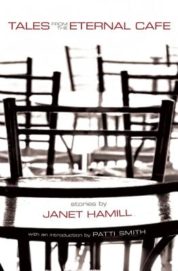 I opened for Patti. There were at least three thousand people outdoors in the sweltering summer night. I get up to the mic, have all my poems memorized. I couldn’t have been happier. You know what it’s like to read to an audience that big. It just feeds you, right? You just float on it, it’s energizing. You feel amazing. Because I was used to reading in little rooms, with just a handful of people, that kind of projective oratory was inappropriate. But here I was able to do just that. Anyway, in that audience that night were two of the fellows from the band. By then I had moved upstate. They were real Patti fans. One fellow, Bob Torsello, came into the bookstore near the library where I was working upstate not long after Summerstage. He said, “Do you have anything by Janet Hamill?” He had no idea! The woman who owned the bookstore was named Jill. She had a section of books by local authors. She said “Oh Janet, she works at the library a couple of blocks over. Her book’s right over there.” So he came into the library and introduced himself. He was very persistent. I had started writing fiction—most of the Tales from the Eternal Cafe were started back then. This was the late ’90s. I had no interest in playing with a band!
I opened for Patti. There were at least three thousand people outdoors in the sweltering summer night. I get up to the mic, have all my poems memorized. I couldn’t have been happier. You know what it’s like to read to an audience that big. It just feeds you, right? You just float on it, it’s energizing. You feel amazing. Because I was used to reading in little rooms, with just a handful of people, that kind of projective oratory was inappropriate. But here I was able to do just that. Anyway, in that audience that night were two of the fellows from the band. By then I had moved upstate. They were real Patti fans. One fellow, Bob Torsello, came into the bookstore near the library where I was working upstate not long after Summerstage. He said, “Do you have anything by Janet Hamill?” He had no idea! The woman who owned the bookstore was named Jill. She had a section of books by local authors. She said “Oh Janet, she works at the library a couple of blocks over. Her book’s right over there.” So he came into the library and introduced himself. He was very persistent. I had started writing fiction—most of the Tales from the Eternal Cafe were started back then. This was the late ’90s. I had no interest in playing with a band!
BH: So the guy shows up at the library, is that right?
JH: Yeah! I thought, “That’s nice.” He wanted to buy my book, and of course I was flattered. He really wanted to be friends and also wanted me to perform with his band, but I was very reluctant. He would bring me things to listen to, to try to persuade me. He brought CDs of John Trudell, whom I fell in love with. Just one of the greats, may he rest in peace.
BH: Yes indeed. A shaman who lived in his pickup truck, Trudell. Great voice, great musician. He truly writes about other realities, and also very political in his work. A founder of the American Indian movement while he was in jail at Alcatraz.
JH: Another CD Bob brought me was the ultimate seduction, as far as melding music to poetry—Kicks Joy Darkness. It’s all different people, a lot of them rock n’ roll people, reading Kerouac. I thought, “I can do that.” Patti has a piece on there; Michael Stipe does something; John Cale does something; I think Nick Cave does something . . . all kinds of people. None of it overpowered the words. So that kind of did it for me. As I was driving to my first rehearsal with Bob and his band on the way to Jay’s (LoRubbio) house, I felt really nervous. I thought “What are you getting into?” Fortunately, it just seemed to work! We did it for quite a while, quite a few years. It got to the point that if it was going to go any further, if it was going to go beyond what it was and become really successful, I was going to have to sing, and I was going to have to start writing lyrics that rhymed. I didn’t want to do either. I remember, when you had Mouth Almighty, you signed me to record. You didn’t want the band. You wanted me to record with ambient music. It took me a long time to come around to see that your original idea was right. Now my ideal would be to do live performance with somebody who could do ambient. I like having another person to work with on the stage. I know some people put boxes up on stage next to them, but I’d rather have a person so the onus isn’t just on me. If they tire of looking at me they can look at the musicians.
BH: So, with the band Moving Star, you did put out an album . . .
JH: Yes, two! The first one was Moving Star, after my poem, which the band had chosen as its name. You were executive producer and Lenny Kaye was the producer. Lenny wanted to do analogue, so we did it in this little shack out behind someone’s log cabin up on top of the Minnewaska preserve outside New Paltz. It took us a long time to do it because we were dependent on Lenny’s schedule. He was separated from his wife at the time, so whenever he had a few days, he would come up and record. Then the second album, Genie of the Alphabet, we produced ourselves. Lenny and Patti played on it though, with David Amram, and you sang, Bob!
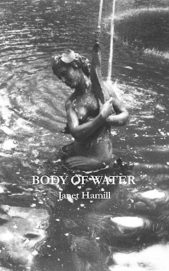 BH: That’s right! We sang a duet.
BH: That’s right! We sang a duet.
JH: I remember we came to Duane Street. The next day you and Elizabeth were heading to Denver. You were going to Naropa [Institute]. Your plane was at 7am and I didn’t know how you could possibly do both, record that piece and still get some sleep, but you can do things like that. That was the poem for 9/11 . . .
BH: It was in Body of Water, which I published through Bowery Books. A wonderful book that has photos by Patti Smith in it.
JH: Yes! Ron Kolm was putting together an anthology of poems about 9/11. He asked me if I had one, and I said yes but it’s sad, it’s not political, and I don’t know if you’ll care for it. He said “No, that’s perfect! Everyone is sending me political poems; I don’t want any more of them!”
BH: Let’s read it. I’ll read it with you, to replicate what we did in the studio that day.
BH & JH:
REQUIEM
New York City, September 11, 2001
The precious skyline of glass and steel remains
Of all that’s lost
And flowing into the sea
At the end of the island where the rivers meet
The candles burn for so many
Doves crowd the branches
Of the blue garden tonight
In every park on every corner a fine curtain of dusk
Settles on the altars
Of the open city
Photographs and the sweet heavy fragrance of flowers
The candles burn for so many
Doves crowd the branches
Of the blue garden tonight
So many wings rising from so many lives ended
In the collapse of the towers
A common prayer
Scribbled on scraps of paper blows through the streets
The candles burn for so many
Doves crowd the branches
Of the blue garden tonight
Beneath the bridges the rivers flow as sorrow into the sea
Of all that left
Innocence and ashes
the precious skyline of glass and steel remains
BH: So the band traveled, as I recall, and went to Europe . . .
JH: We didn’t go to Europe, we went to Seattle.
BH: The band didn’t go to Ireland?
JH: No, they didn’t come with me to Ireland. There wasn’t money for that. We did go to Seattle for the Bumbershoot Festival, to the Andy Warhol Museum in Pittsburgh, and to “Lowell Celebrates Kerouac.” We also played this place called the Bowery Poetry Club many times—I’m not sure if you know of it?
BH: Is that where Patti was playing clarinet with you guys? That was quite a gig!
JH: She played clarinet on both CDs. She has such pride in her clarinet playing.
BH: Well, I think it meshed perfectly with the wildness of that classic garage band, Lost Ceilings!
JH: That was a great night, a really great night. Patti and Lenny played with us.
BH: I was so thrilled when Knock came out, because in a way it seemed to encapsulate all of your travels and poetries. You put it all into a classic poetic form, but seem to rebirth it in a way that was completely your own. It seemed like your own “Knock” form to me.
JH: Maybe they’ll call it that! I had never wanted to write in form or rhyme, apart from interior rhyme and alliteration here and there. I went back for my MFA with the idea of teaching, and I really had to brush up on my form. That’s where I was introduced to the pantoum. I loved the looseness of it, the repetition of it, and the fact that it didn’t have to rhyme. I’m pretty sure the fact that it comes from Malaysia has something to do with my being drawn to it. Malaysia is an island nation, surrounded by water. You get the repetition of the waves coming in and flowing out again.
BH: Lapping. The sea goes out and it’s left in the sand, the imprint is what you translate into the pantoum.
JH: And because of the way the repetition works it produces really unusual juxtapositions. You get surrealism.
BH: Totally, it seems to follow you into the trance.
JH: The poem almost writes itself. I loved the process of writing the poems in Knock. Some are strictly about my travels; some are about novelists and poets that relate to places in my travels. A couple are about of the Mexican writers I’m particularly fond of. One is about the poet Xavier Villaurrutia, who I discovered just a few years ago. He wrote mainly in the 1930s, very much an aesthete. He often writes about statues. I was thinking about him and wondering if he loved Cocteau. His poetry reminded me of Cocteau films. Then I read an interview with him and Octavio Paz, who visited him in his studio, which was decorated with black velvet drapes and statues to make it look like a Cocteau set. He said “This is the only way I can live in Mexico.” There’s also a pantoum about Bolaño . . .
BH: “The poets are the savage detectives” is what he tells us.
JH: So great. Then there’s one about this great moment in Mexico City when Leonora Carrington, Remedios Varo, Alice Rahon and Frida Kahlo were all in Mexico City at the same time, painting and writing. And they knew each other.
BH: And they all end up in your poem, which you’d better get ready to read for us.
JH: Well, I thought I’d read something about CBGB’s in the old days, because it’s right across the street.
BH: Truth to the door, I love the idea of reading these. The book is such a perfect form and so the book is a pantoum, the way the poems divvy up into their places and people. Then of course those doors which you’ve gotta knock on to go through.
JH: I was so fortunate with that. Mary Ann Livchak, whom you met at the concert with Adele (Bertei) and Eszter (Balint). She went to Yemen. The door photos are all doors from Yemen. You’d been to Yemen.
BH: It’s true.
JH: They look enough like North African doors, where I had been. She very generously let me use them for the book. The publisher was fine with that and the work went really well. I explain in the foreword that the idea for the book came in a dream. A lot of ideas for poems in books come from dreams. This was a dream where a person gave me a 45 RPM, in a little paper wrapper. You know, with vinyl 45s there’d always be a cutout in the middle of the paper and you could see the label inside. It was the colors associated with sub-Saharan Africa. It was a black background with yellow, green, and red, and it was called “Knock of Africa,” that was the name of the record. But the music was not in any way African. It was contemporary European electronic music. The only thing I can think of as to why it would have been that kind of music was because I was listening once again to Brian Eno, whose work I love, like Music for Airports. That was the first series, which I called “Knock of Africa.” Someone suggested that I extend it into a series. That’s why it’s broken up into all these different sections.
BH: It’s an amazing travelogue of a book, and I didn’t know that Knock of Africa came out of a 45 in a dream whose label belies the music. Those were very early 45s, where you had a generic sleeve; I recall the very first 45 I ever bought was The Lion Sleeps Tonight, “Awimoway, Awimoway.” Gosh, that would be mid-50s. They just put the vinyl into those green paper generic sleeves. This is before they had artwork on those record covers.
JH: My oldest brother introduced rock and roll to all of us. Then it was doo wop. There was a little record store in the neighboring town. He would walk up there with his friends and come home with all these little 45s. That’s how they looked back then. Being young it made such an impression, an impression that can last a lifetime.
BH: And infiltrate your dreams and result in a book! So tell me something I can hold onto?
JH: OK, I’ll read this to you, in memory of what used to be.
Tell Me Something I Can Hold on to something to fill empty space a star name
sold as white wine it tasted like piss say something over this bad excuse
CBGBs spelled cut glass in four letters transcendence is a thirteen-letter word
I used to go to see my friends break guitar strings in ripped jeans & t-shirts
Sold as white wine it tasted like piss say something over this bad excuse
Most bands were unaware of REM sleep all they knew were needles & Heineken
I used to go to see my friends break guitar strings in ripped jeans & t-shirts
Patti’s Horses & Television’s Marquee Moon were in love with French
Symbolism
Most bands were unaware of REM sleep all they knew were needles & Heineken
I stayed until they started lobbing bottles at the audience what was the point
Patti’s Horses & Television’s Marquee Moon were in love with French
Symbolism someone caught a tear in my eye & walked me home to Bleecker & Elizabeth
I stayed until they started lobbing bottles at the audience what was the point
the music was grounded in three cords of Bowery flooded gutters & graffiti
someone caught a tear in my eye & walked me home to Bleecker & Elizabeth
tell me something I can hold on to something to fill empty space a star name
JH: That was my experience. Sometimes it was wonderful, but other times it was just pretty grimy and sometimes the bands were really bad. I remember the Contortions, Adele’s band. The leader, James Chance, used to throw bottles of beer at the audience! I thought “This is madness! Why do this to an audience that’s here to support you?” By then, I was moving on to other things and didn’t go much anymore.
BH: Well, I like to say that Bowery Poetry Club is across the street from CBGB’s, but it’s been gone for ten years now.
JH: That long, really?
BH: Something like that.
JH: I haven’t been in it since its last incarnation. When I last went in it, it was no longer a bar, but you could buy CBGB’s memorabilia. Little baby onesies and
t-shirts . . .
BH: That’s what’s moved to Las Vegas. You can still go and buy a t-shirt. So what are you working on now?
JH: Well, I’ve gone back to fiction. I really love it and it seems to suit me as I’ve gotten older. I like making up characters and stories. I’m working on my first novel.
BH: Can you tell us what it’s about?
JH: It takes place in New Jersey, where I was born and raised. It mostly takes place in a boardwalk town down the shore. The protagonist is from North Jersey, a girl like me. Her name is Claire. It’s a coming of age story. It takes place in the late 1960s. It’s flavored by a lot of that culture. Her mother dies and her father remarries very quickly. She runs off with a carny, Marco, who she meets in Palisades Park and whose family is based down the shore. She moves in with him, but the family can’t stand her because she’s from a middle-class background in Northern Jersey. They’re semi-Gypsies with roots in New Orleans. Marco’s grandmother, however, really likes Claire. They move in with the grandmother, whose name is Madam Bogart. She has a fortune telling booth on the boardwalk. This is just the basics.
BH: Wow, it sounds like there could be some elements of Surrealism there. Is there a title that you could throw out?
JH: The working title is Madam Bogart. She’s a character I conceived in the ’70s. I remember driving down to go camping in Florida Keys. We drove through the nightit was Neil and I, my good friend Cath and her husband. Steve, the husband, was driving and I was the navigator n the passenger seat. We were going through Georgia in the middle of the night. I’ll never forget it. There was a great big illuminated neon hand and the words “Madame Bogart: Fortune Teller.” I just thought it was the coolest thing! What a name for a fortune teller! So I started creating this character. I’ve written poems about her, but she never seemed suitable for that medium. It wasn’t until I became comfortable with fiction that I felt I’d found the medium where she belonged.
BH: Well I can’t wait for Madam Bogart to be among the living. Your breath is a voice in your poems. Ginsberg would talk about the breath and Whitman and Anne Waldman talking about the breath dividing the line . . . But your breath is truly a character in your poems.
JH: Thank you Bob.
BH: Thank you for dropping by here. I guess “Let’s Talk” can now move into the past tense: “We talked”! So until the next time! Thank you, dear listeners, for being in the Bowery aerie where it was eerie and clearly Claire became a voyant with Janet Hamill.
Click here to purchase Tales from the Eternal Cafe at your local independent bookstore

Click here to purchase Body of Water at your local independent bookstore

 Michael Copperman
Michael Copperman

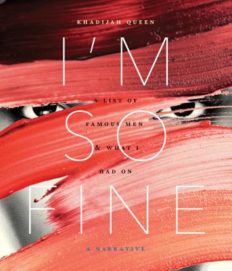
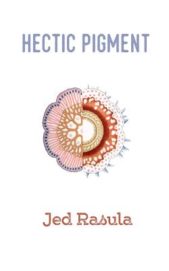
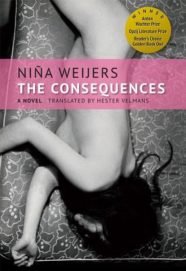
 Sandra Hochman
Sandra Hochman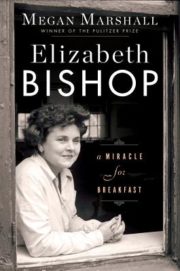
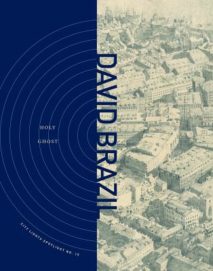
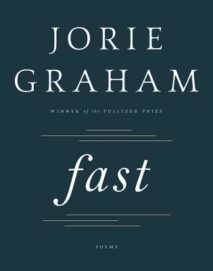
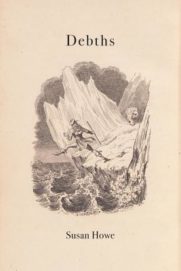
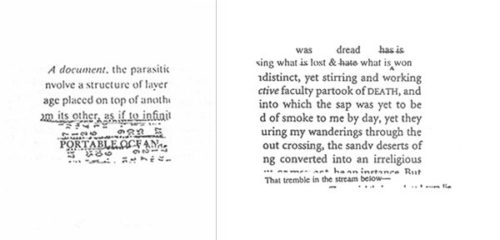
 Interviewed by Bob Holman
Interviewed by Bob Holman

